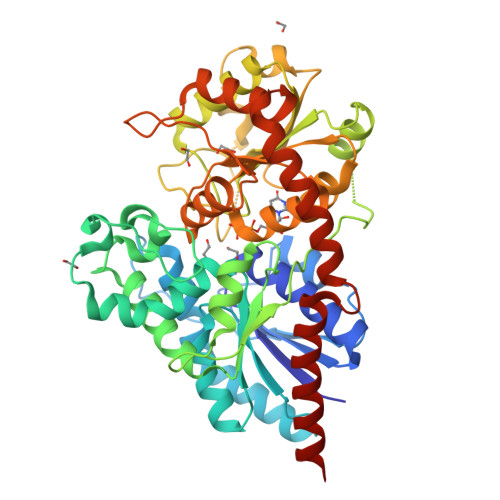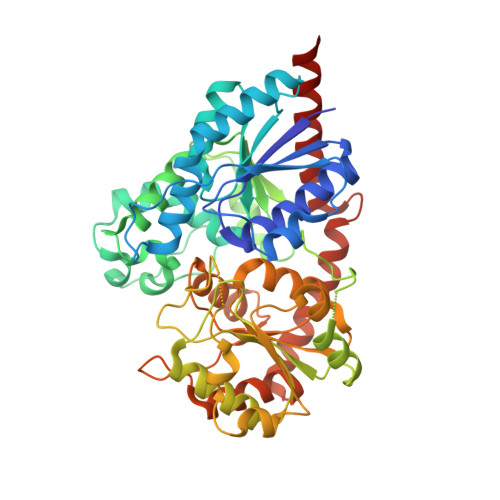Characterization and Engineering of the Bifunctional N- and O-Glucosyltransferase Involved in Xenobiotic Metabolism in Plants.
Brazier-Hicks, M., Offen, W.A., Gershater, M.C., Revett, T.J., Lim, E.K., Bowles, D.J., Davies, G.J., Edwards, R.(2007) Proc Natl Acad Sci U S A 104: 20238
- PubMed: 18077347
- DOI: https://doi.org/10.1073/pnas.0706421104
- Primary Citation of Related Structures:
2VCE, 2VCH, 2VG8 - PubMed Abstract:
The glucosylation of pollutant and pesticide metabolites in plants controls their bioactivity and the formation of subsequent chemical residues. The model plant Arabidopsis thaliana contains >100 glycosyltransferases (GTs) dedicated to small-molecule conjugation and, whereas 44 of these enzymes catalyze the O-glucosylation of chlorinated phenols, only one, UGT72B1, shows appreciable N-glucosylating activity toward chloroanilines. UGT72B1 is a bifunctional O-glucosyltransferase (OGT) and N-glucosyltransferase (NGT). To investigate this unique dual activity, the structure of the protein was solved, at resolutions up to 1.45 A, in various forms including the Michaelis complex with intact donor analog and trichlorophenol acceptor. The catalytic mechanism and basis for O/N specificity was probed by mutagenesis and domain shuffling with an orthologous enzyme from Brassica napus (BnUGT), which possesses only OGT activity. Mutation of BnUGT at just two positions (D312N and F315Y) installed high levels of NGT activity. Molecular modeling revealed the connectivity of these residues to H19 on UGT72B1, with its mutagenesis exclusively defining NGT activity in the Arabidopsis enzyme. These results shed light on the conjugation of nonnatural substrates by plant GTs, highlighting the catalytic plasticity of this enzyme class and the ability to engineer unusual and desirable transfer to nitrogen-based acceptors.
Organizational Affiliation:
Centre for Bioactive Chemistry, Durham University, Durham DH1 3LE, United Kingdom.




















